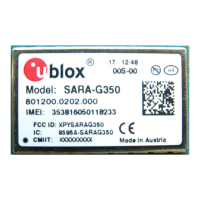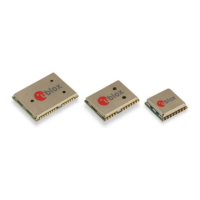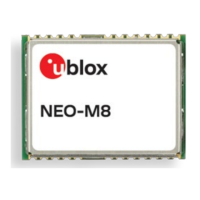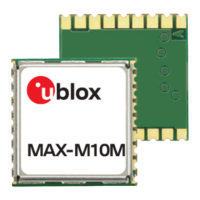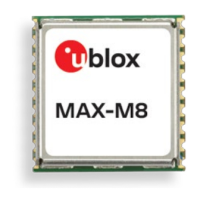SARA-R42 - Application note
UBX-20050829 - R02 Network registration Page 25 of 58
C1-Public
7.5 Mobility scenarios
Devices used in non-static installations can move out of range of the currently serving cell. This means
entering another cell of the RPLMN (registered PLMN) or of a different PLMN or moving into an area
where there is no cellular coverage or no roaming agreement for the device.
If the module loses the synchronization with the serving cell but finds another cell to camp on, any
PDP context and open sockets will be kept. This holds in particular for seamless change of serving cell
with cell reselection or handover procedures.
If mobility implies crossing national borders or simply changing the PLMN, it is likely that the new
PLMN will force the module to reattach. This can also occur on the RPLMN, for example when the
network needs to refresh IP addresses. If the module reselects a 2G cell and registers on a 2G PLMN,
it is necessary to re-establish the PDP context in order to restore the services requiring cellular
connectivity.
If mobility implies performing data traffic in roaming conditions, some aspects, such as the ones
listed below, need to be taken into account in order to prevent possible undesired behaviors.
• Data sessions longer than 2 minutes
• Availability of an Operator PLMN (OPLMN) list with an entry of the same MCC as the current
Registered PLMN
In this scenario, the module will carry out a high priority scan after 2 minutes, thus causing the abort
of the RRC connection and the interruption of the data traffic.
A possible solution to this situation is to apply a manual PLMN selection as a workaround for this
specific SIM setting.
Finally, if it is needed to limit data traffic when working in roaming conditions, the AT+UDCONF=76
command could be referred applying the proper syntax. In this way the selected PDP context is not
able to send data when roaming on a network.
7.5.1 Mobility Management procedures
Mobility management procedures are different depending on the state of the radio connection:
• Connected Mode Mobility (CMM) is handled by the eNodeB in LTE Cat M1. The UE is instructed by
the eNodeB to provide measurement reports on neighbor cells so that the network can decide if
and when the radio resource control (RRC) connection has to be handed over to another cell.
o The network itself will allocate gaps in the downlink transmission to allow the device to perform
the intra-band or inter-band measurements: this will impact the downlink throughput.
o In case the eNodeB does not support CMM, or current RAT is NB-IoT or 2G, the RRC connection
will be released at cell change due to radio link failure and it will be re-established by the device
on the new selected cell. Radio link failures usually implies loss of uplink or downlink packets.
• Idle Mode Mobility is handled by the UE using information transmitted in the System Information
Blocks (SIB) broadcast by the cellular network within the cell. While in idle mode the UE will make
measurements of neighboring cells and based on the cell reselection criteria read in the SIBs it
may choose another serving cell to synchronize with.
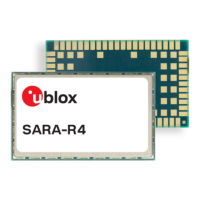
